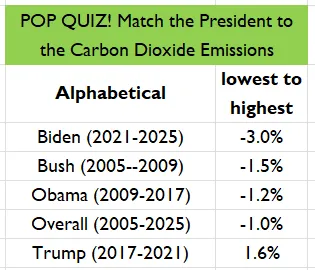https://www.cfact.org/2019/04/19/renewable-electricity-promos-are-greenwashing-scams/
Energy Service Companies (ESCOs) use greenwashing to hawk products they claim to be environmentally friendly to gain market advantages.
Sales representatives typically work on commissions.
Just respond to telephone solicitations, buy in to advertising promotions or sign up at their event tables and right away — for a bargain few extra bucks a month — you will be saving the planet from something terrible.
How does anyone know that the companies are coming clean on real sources of that “renewable energy” they signed up for? As reported in a City and State article by Ben Adler, the short answer is that most customers don’t, because investigating such claims tends to be impossibly confusing for average consumers.
Quoting Russ Haven, general counsel at the New York Public Interest Research Institute, “What are you supposed to do, go look at their Securities and Exchange Commission filing? Trust the salesperson at the other side of the phone?”
The only widely-respected certification company for ESCOs is Green-e, a program of the San Francisco-based Center for Resource Solutions.
The Green Mountain ESCO in New York offers a Green-e certified program for commercial customers.
However, since most residential customers are not aware that Green-e exists, only two of the state’s roughly 150 ESCOs subscribe to its conditions: Ambient Energy which claims to offer a 100 percent wind option called Ambient Green Northwest; and Constellation NewEnergy which has a 100 percent wind plan called Wind Power.
Customers who bother to check on full ESCO disclosures regarding sources of energy sold by Green Energy and other companies are likely to discover that most energy they sell doesn’t come from renewable sources as they were led to believe.
What they really bought was renewable energy credits (RECs) generated out of thin air such as wind turbines by green energy providers.
Whereas Green Mountain advertises 100 percent clean, renewable energy, what it actually sells is an equivalent number of RECs needed to offset the hypothetical carbon footprint of energy you consume.
According to the company’s 2016 environmental disclosure label, half of its energy came from fossil sources (5 percent coal, 45 percent natural gas). Most of the rest of the low-carbon energy came from nuclear and hydropower which, like all sources, face widespread opposition from environmental groups.
Here’s how the scam works.
Renewable energy generators represent a government-approved list of sources such as wind, solar and biomass (which after all is really a fossil fuel which produces carbon emissions.)
When a renewable energy source puts one megawatt-hour (1 Mwh) on the electrical grid, it writes itself a transferable certificate of credit saying that it has done so which can be sold to a broker, who in turn sells them to a utility or a “100-percent renewable community.”
Brokers with market knowledge often buy energy from the lowest-price supplier and sell it to the highest purchaser at a premium.
Neither the generator nor the broker are required to actually have the particular REC in hand at time of sale — only an agreement to provide it when it is available. In fact a seller can even issue its RECs even before the source is online – for example as revenue to build a wind farm.
All electricity sold feeds into the REC consumer’s local utility mix. None can be isolated and directed from a selected source to one particular house.
Mother Jones quotes Michael Gillenwater, a Princeton researcher who co-developed the EPA’s carbon emissions tracking system saying that RECs are mostly donating to a cause. “What you are doing is subsidizing the market for renewable energy.”
Gillenwater also said that most projects would have produced the energy regardless of whether consumers pitched in – for example for wind farms which pre-existed before REC’s were available.
A number of U.S. municipalities and businesses that brag about “going 100 percent renewable” are seriously ripping off taxpayers and consumers who get stuck with the considerable penalties. Georgetown, Texas — population 71,000 — where global warming guru Al Gore spoke at a 2016 city “trailblazer” ceremony offers a good lesson.
As reported in a Dec. 18, 2018 article in The Daily Caller, Georgetown is now buckling under an annual $7 million loss from bad investments in contracts with a Buckhorn solar plant and a Spinning Spur wind farm.
Local residents have since seen annual average household electricity bills increase by $1,219 over what they paid in 2014.
To be clear, Georgetown, like other places claiming to be 100 percent reliant on renewable energy doesn’t actually have any wind turbines, solar panels, or even any biomass resources powering it.
No, the city simply pays a big surcharge that purports to come from renewable sources.
Furthermore, there is an easy way to tell that Georgetown really isn’t a 100 percent renewable place. If it were, its lights would go out at night when the wind wasn’t blowing.


